The most important holiday celebrated in Hong Kong is just around the corner! In Asian culture, Lunar New Year signifies a new beginning that occurs on the new moon of the first lunar month. This year, it will fall on February 10, 2024, welcoming the year of the dragon. Rituals and traditions spanning a 15-day period mark the holiday, also called Spring Festival, but how exactly do we celebrate Chinese New Year in Hong Kong?
Visit Lunar New Year fairs
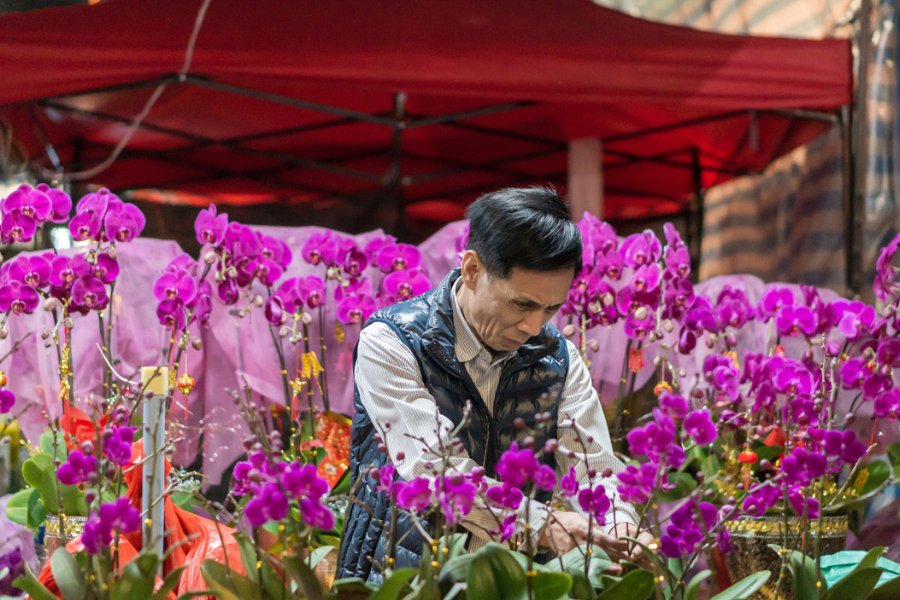
For the first time in four years, Lunar New Year fairs across Hong Kong will feature food stalls, adding to the festive atmosphere. Running from February 4-10, 2024, these fairs draw crowds eager to partake themselves in the celebration. They are normally open air markets flooded with stalls selling Chinese New Year décor, trinkets, flowers, candy, and snacks. It’s a fiery sight to see with lots of red that fits the highly fuelled aura of the atmosphere.
Buy new clothes
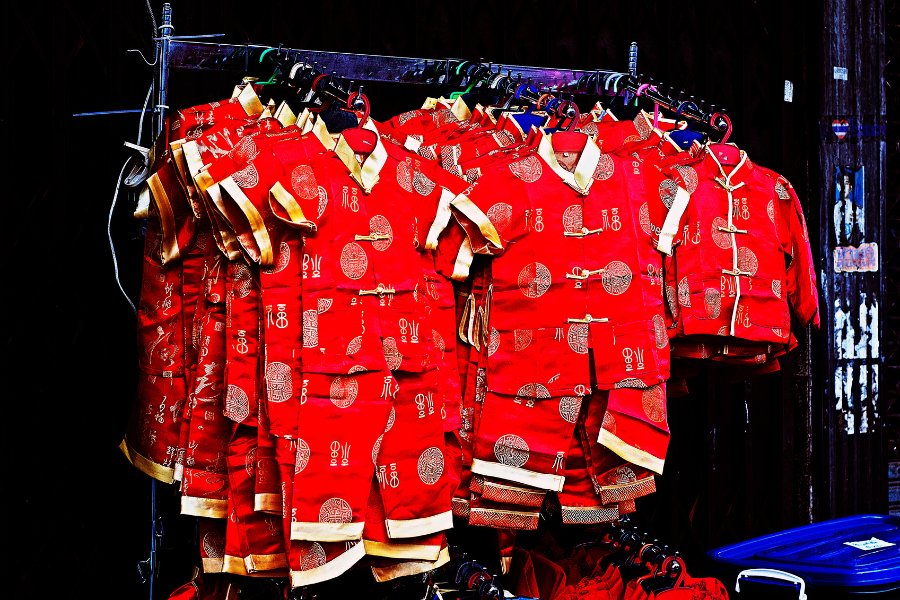
The Lunar New Year emphasizes newness. Before the holiday officially begins, expect shopping malls to be jam-packed with people scurrying to buy new things. In particular, new clothes are a must. To wear a fresh set of clothes on the first day of the holiday symbolizes starting on a clean slate. Something noteworthy to mention is to never buy shoes. The word “shoes” has similar pronunciation to the word “rough” and the exasperated exclamation “Hai!” in Chinese, so buying them potentially brings bad luck.
Buy plants that bring prosperity and luck for the new year
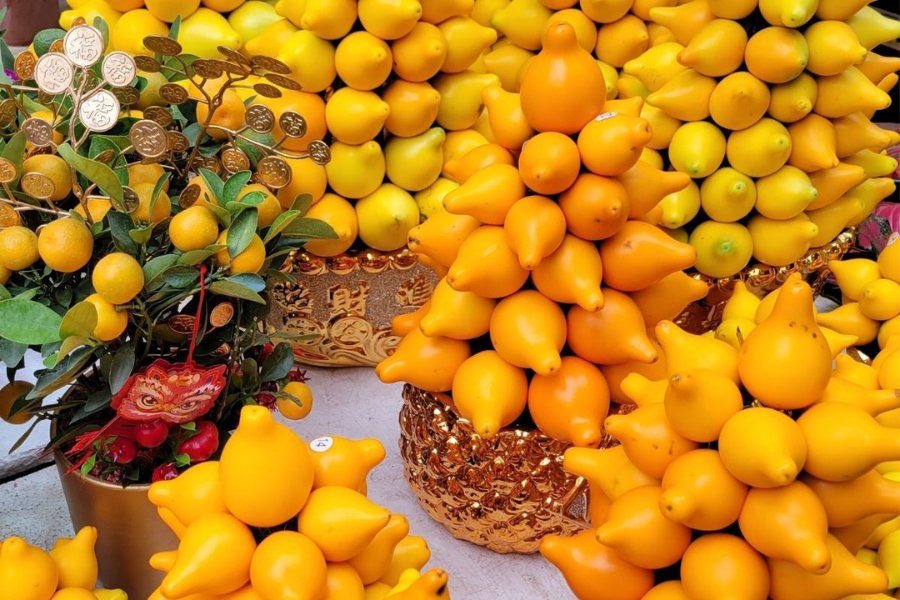
Fresh plants and flowers are bought for Chinese New Year. Not only do they represent fresh starts, certain flowers have auspicious meanings. Orchids are popular flowers to gift as they represent abundance, luxury, and for those who want children, fertility. They make for beautiful home décor and come in various colours. Mandarins and kumquats are the most common fruits seen in plant-like form and are usually placed at the front of homes. They represent abundance, prosperity, wealth, and unity.
Clean your house as a sign of a new beginning
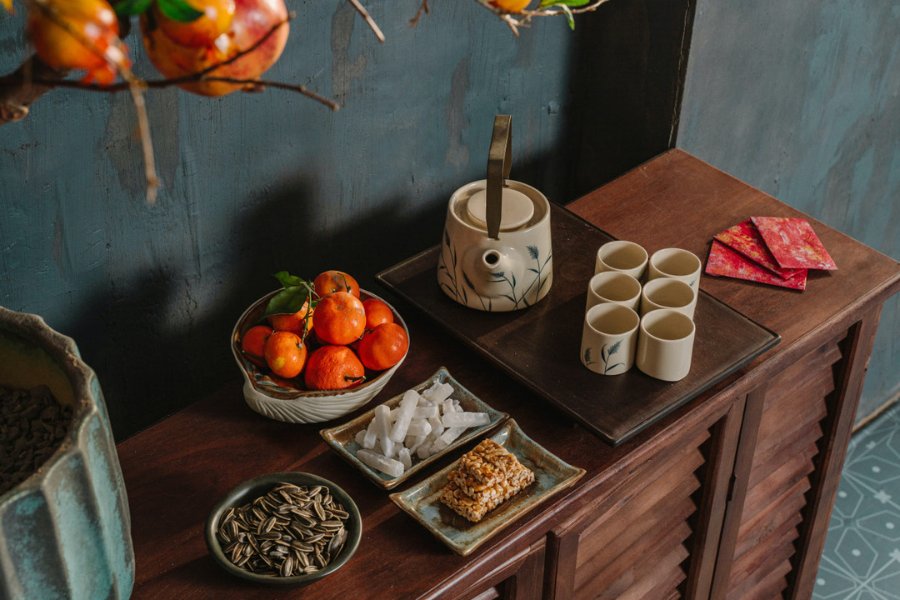
It’s time to declutter! Chinese New Year is the time to clean out your space, dusting away dirt and debris and making room for a breath of fresh air. Cleaning house is symbolic of getting rid of bad luck from the previous year that may hinder fresh, new energy. Do note that cleaning must be done before the eve of the holiday because doing so during the holiday may sweep out incoming good luck!
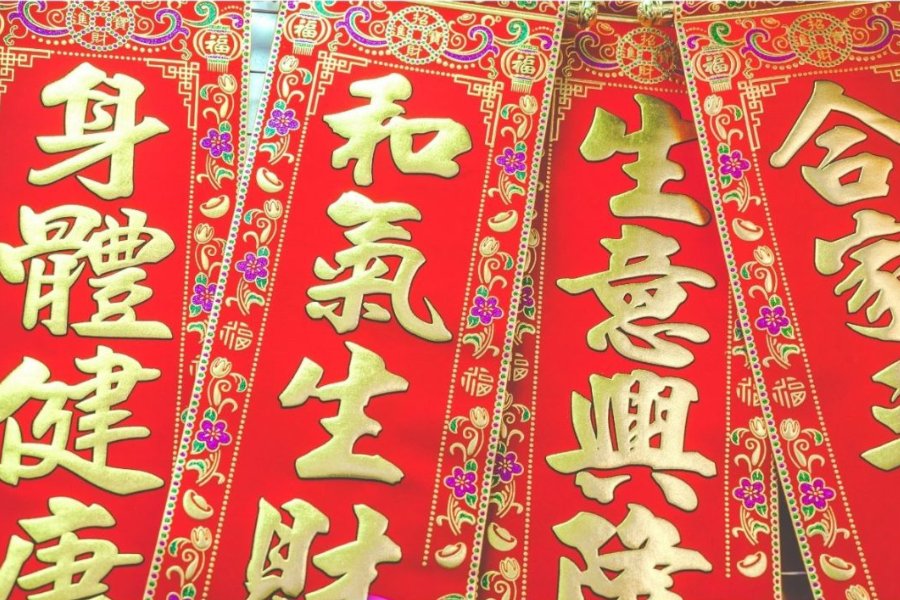
Seeing red? Red is a lucky and auspicious colour for Chinese New Year. Red represents good luck, passion and prosperity. Chinese legend also explains how red decoration scared away a demon from massacring a village, so the colour is also symbolic of warding off evil and negative energy. Thus, people hang up red adornments like spring couplets, fai chun (揮春) which are characters for good luck and prosperity traditionally hand-painted on a square or rectangle paper and hung on the door, and lanterns at the entrance of their homes to ward off bad energy and welcome the good.
Chinese New Year couplets are hung at the entrance of homes. These couplets showcase beautifully written Chinese calligraphy that express sincere wishes of blessing. And to no one’s surprise, they are written against a red background. Similarly, door god banners act as a protective guardian for the home. The banners normally come in pairs, always facing each other, to ward off evil.
Meet family and relatives (and feast!)
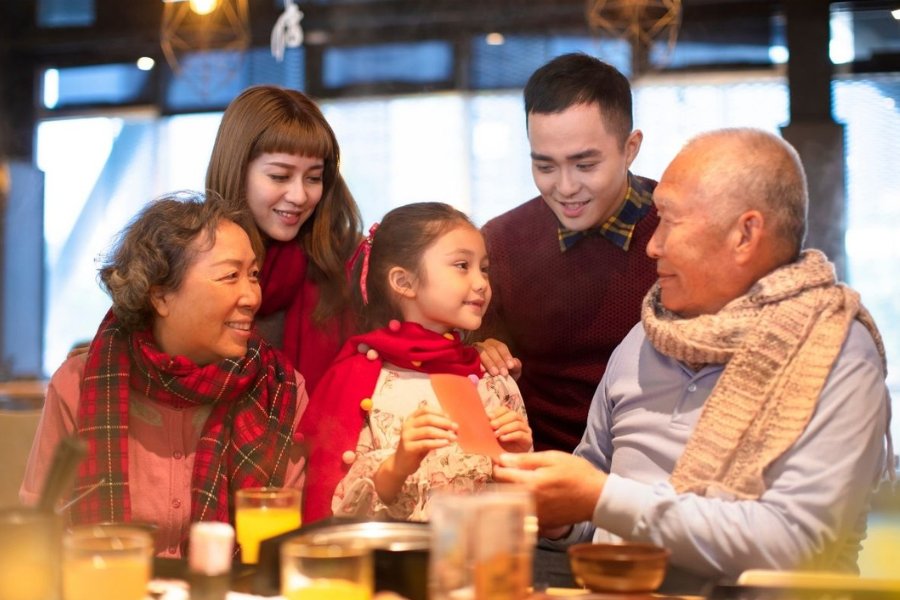
No Chinese holiday is without a family gathering and heaps of food to feast on together! The most important gathering happens on the eve of the lunar new year, which falls on February 9 this year. At least two generations unite and create a warm, upbeat atmosphere that sets the tone for a new year full of new beginnings. Connecting with loved ones is a reminder of the constant support we have that grounds us as we grow.
Give lucky red envelopes
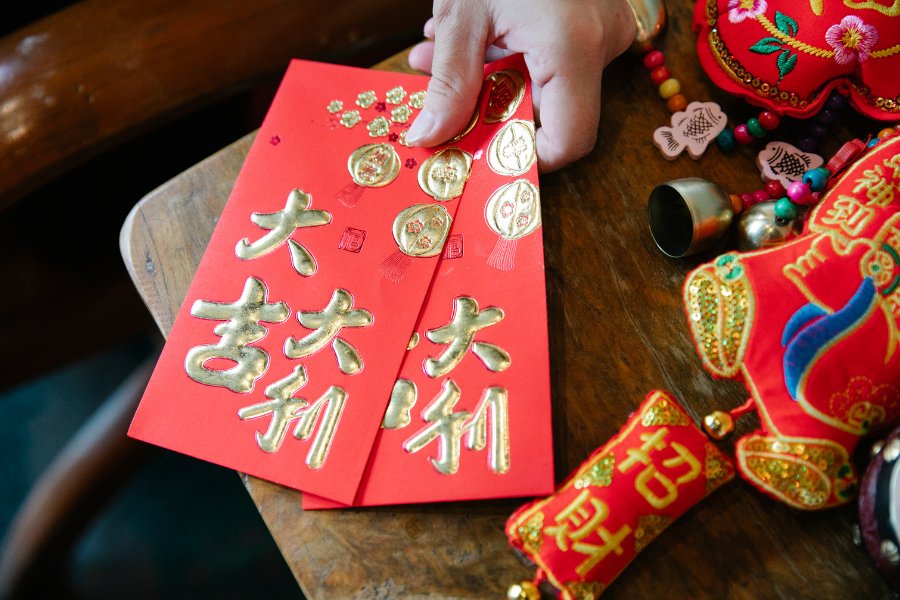
A very important Lunar New Year tradition is red envelopes, commonly known as lai see, which are filled with money and gifted to people. Typically, married couples gift lai see packets to children and unmarried ones. The amount of money ranges from a few dollars to significantly bigger amounts depending on your relationship with the person. Upon exchange, both parties wish blessings for each other (e.g. good health and wealth). It’s also common for employers to gift red packets to staff as a token of gratitude for their work.
Exchange gifts with loved ones, especially fruits or rice cakes
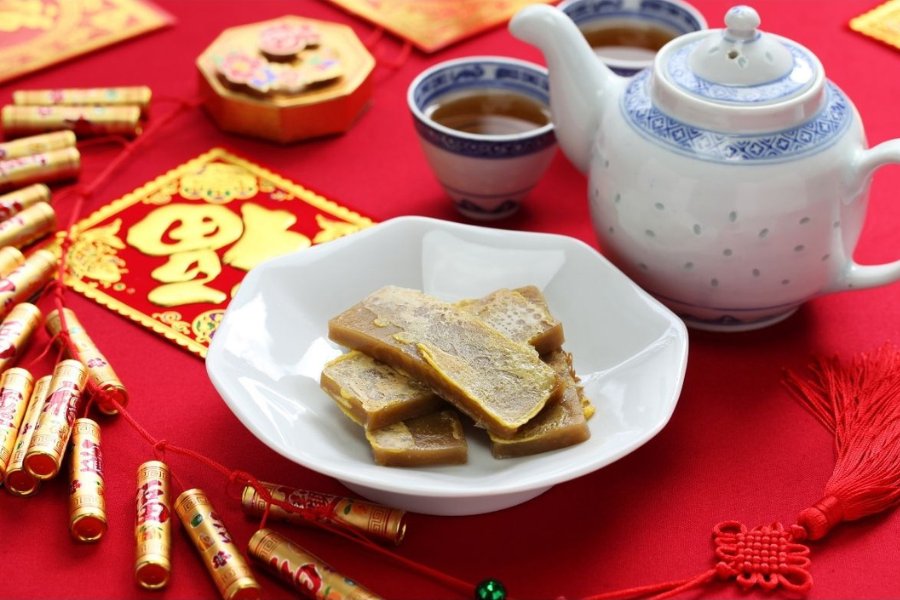
Chinese New Year is a time for people to visit the homes of relatives and friends, but it’s never done empty-handed. Besides red packets, food is probably the number one most common gift. Culinary gifts range from glutinous rice cakes (nian gao 年糕) made of glutinous rice flour representing a higher position in life and fruit baskets representing fulfilment and wealth, to sweet festive treats like candied fruits representing an easy and fruitful year filled with abundance ahead.
Watch dragon & lion dances
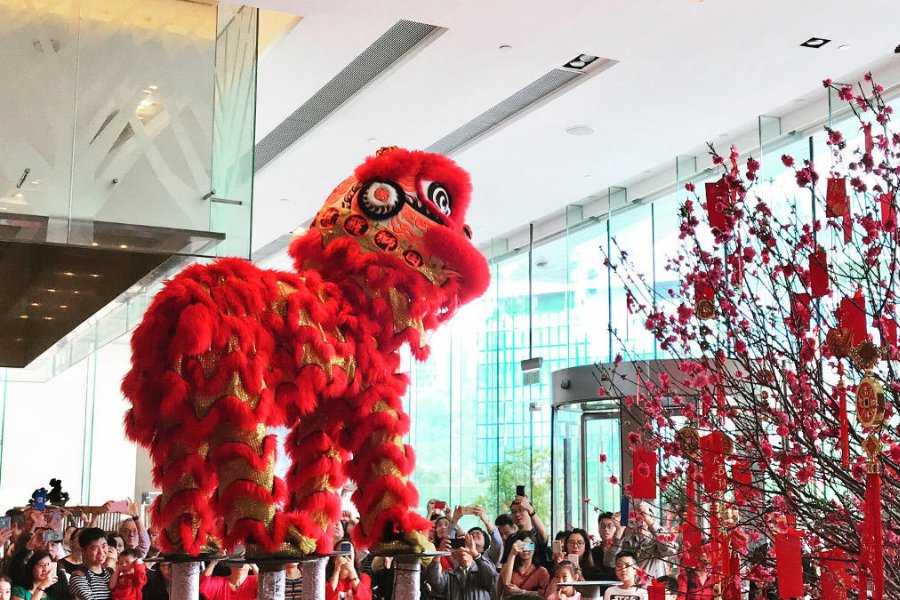
There’s no better way to kick-start the festivities than with the loud and boisterous dragon and lion dances. The dances punctuated with clanging from drums and cymbals parade the streets, malls, and even offices. They’re performed to bring good luck and prosperity. The costume is often worn by four or more dancers gliding and moving the creature’s head vigorously to affect a realistic lion or dragon. The more dancers, the longer the creature’s body and the more luck it represents. Have a brush with the mighty beast!
Watch fireworks show & set off firecrackers
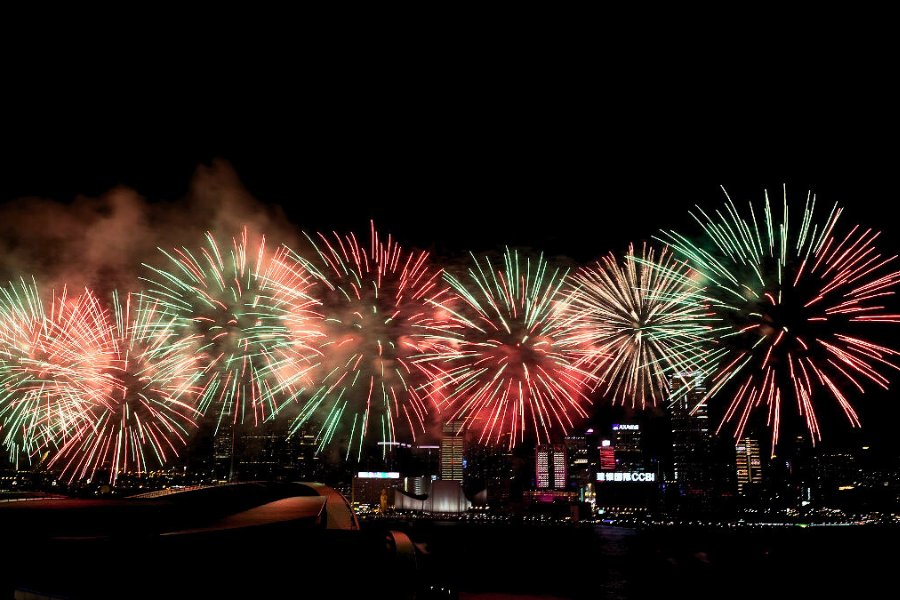
This year, we can expect a grand return of the fireworks show after a five-year hiatus, set to happen on the second day of CNY (February 11, 2024). Legend has it that the noise from fireworks and firecrackers scared off the mythical beast in the legend about endangered villagers. Therefore, the louder it gets, the better. The debris left from the firecrackers is left on the ground to avoid sweeping away any good luck that comes from the display.
Pray to deities at temples
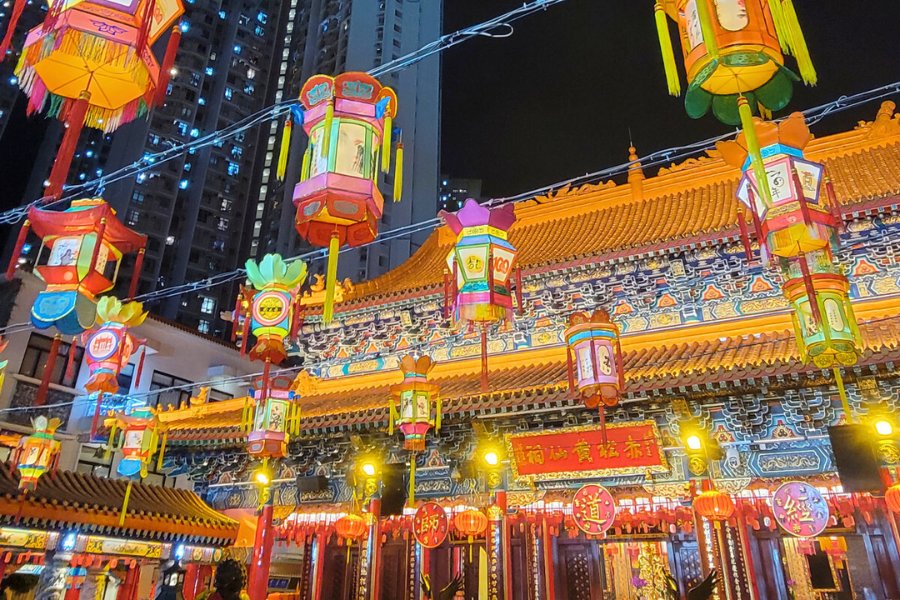
At the start of Chinese New Year, people visit temples to pay respect to their chosen deities. One popular temple is Wong Tai Sin Temple. There, worshippers express gratitude and ask for various wishes from various gods. Among them include career advancements, good health, finding true love, and earning more money. Some people shake numbered fortune sticks in a cup or tube on bended knees, a fortune-telling practice known as kau chim (求籤). The sticks that fall out of the cylinder highlight things to expect in the upcoming year.
Make offerings to ancestors
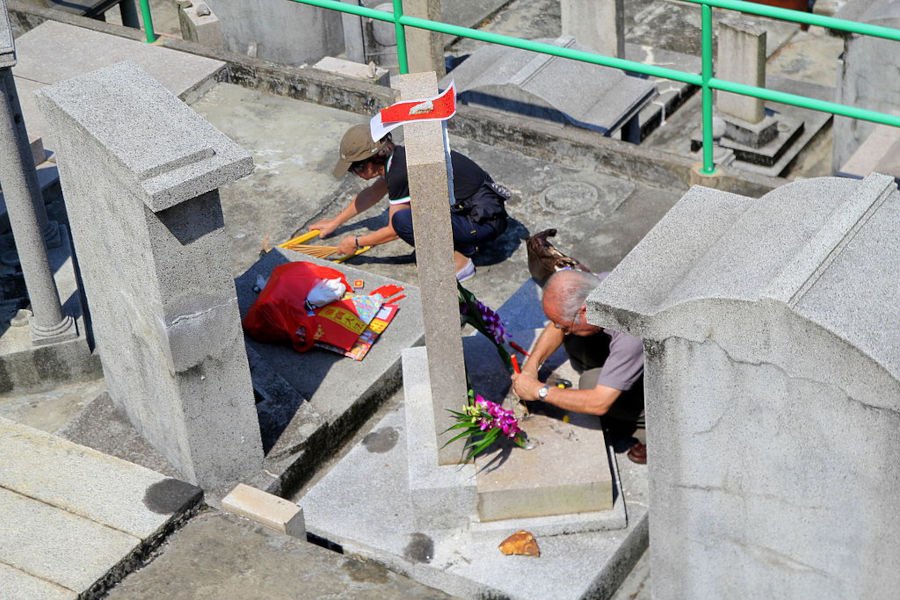
In addition to visiting temples, people pay their ancestors and passed loved ones a visit at tombstones. During most festive celebrations in Hong Kong, one shall never forget about paying respect to friends and relatives that have passed on. Similar to never showing up empty-handed when visiting someone’s home, tomb visitors bring fruits, flowers, and foods to place in front of the tomb as they light incense sticks and bow in respect. Some people also have small shrines dedicated to relatives in their homes, where they pay their respects during major festivals in the same way.
Light lanterns, especially during Lantern Festival
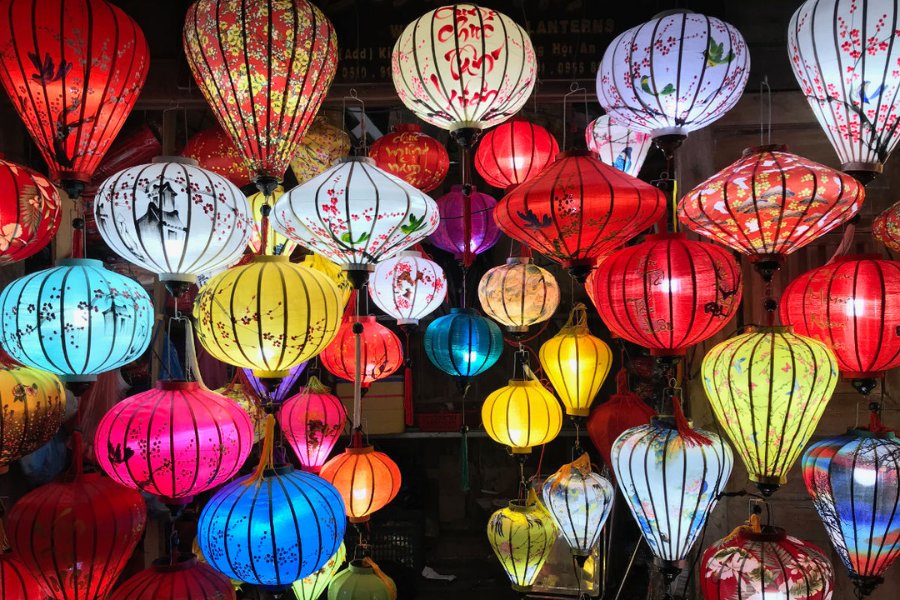
A festival within a festival? How about it! On the last day of the 15-day Chinese New Year holiday, people in Hong Kong celebrate the Lantern Festival. The festival lights the way for a fortunate path during the year and also honours peace, forgiveness and reconciliation. On a religious note, for those who practice Buddhism, the lit lanterns are a tribute to Buddha. The lanterns also come in animal shapes, especially the zodiac animal of the year! The vivid, contemplative display is the perfect way to mark the end of the holiday.
Header image credits: Lewistsepuilung via Canva




Add comment